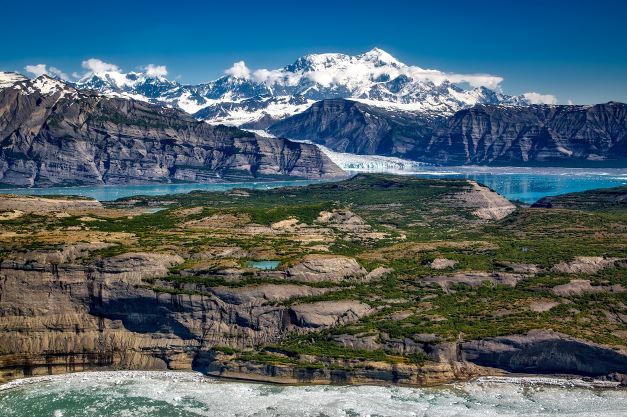Researchers looking to identify some of the most difficult-to-find archaeology, including nomadic hunter-gatherer landscapes, are looking to advanced technology to help in the search.
Archaeologists at the Max Planck Institute and Simon Fraser University are gaining new insights from a computer predictive model that can assess the likelihood that landscapes contain such well-sought sites.

Their work, “Does the Locally-Adaptive Model of Archaeological Potential (LAMAP) work for hunter-gatherer sites? A test using data from the Tanana Valley, Alaska,” is newly published in the journal PLOS One.
“Preserving archaeological sites from destruction ensures that history is not lost and is especially important for communities that did not use written records; but before sites can be protected and studied, they must first be found,” said SFU archaeology Ph.D. student and interim director of SFU’s Museum of Archaeology and Ethnology Rob Rondeau.
Hunter-gatherer landscapes
Chris Carleton, now of the Max Planck Institute for Chemical Ecology, developed LAMAP–a predictive model that considers distributions of values for landscape variables around known sites.
LAMAP uses information from landscape data to estimate the archaeological potential of land that has not been examined by archaeologists. Carleton successfully demonstrated the method on large, permanently occupied sites in Belize and Turkey.
Rondeau, an experienced underwater archaeologist, connected with Carleton at the suggestion of SFU archaeology professor Mark Collard, who supervised Carleton while he was a Ph.D. student and SFU post-doctoral fellow.
Rondeau’s interest is finding ancient sites on submerged landscapes off the British Columbia, Canada, coast—those occupied when sea levels were much lower than today. Their collaboration plays a major role in helping him to identify underwater campsites of hunter-gatherers.
Carleton and Rondeau tested LAMAP on the Tanana Valley in Alaska, which has a record of hunter-gatherer sites stretching back to the last Ice Age, 14,500 years ago. They “trained” the model with data about the landscape around 90 known sites, randomly selected from the State of Alaska’s Heritage Database.
Computer modeling finds archaeology sites
The pair predicted which parts of the landscape had the highest potential for producing more sites, and then returned to the database to evaluate their predictions. Areas that LAMAP identified as high potential proved to contain many of the remaining sites in the database, confirming that LAMAP was able to predict preferred campsite areas that may have been occupied by hunter-gatherers only for a few days or weeks.
To estimate archaeological potential, they used physiographic variables such as elevation and slope, rather than variables that are known to vary on short time scales, like vegetation cover.
Significant computing power was needed to undertake the systematic comparison of millions of data points from the 7,000-sq.-km study area. Rondeau traveled to Alaska in 2019 to experience the landscape and will next apply what has been learned to the deep waters off the B.C. coast.
The study’s authors are Rondeau, Carleton, Collard, and Jonathan Driver.




